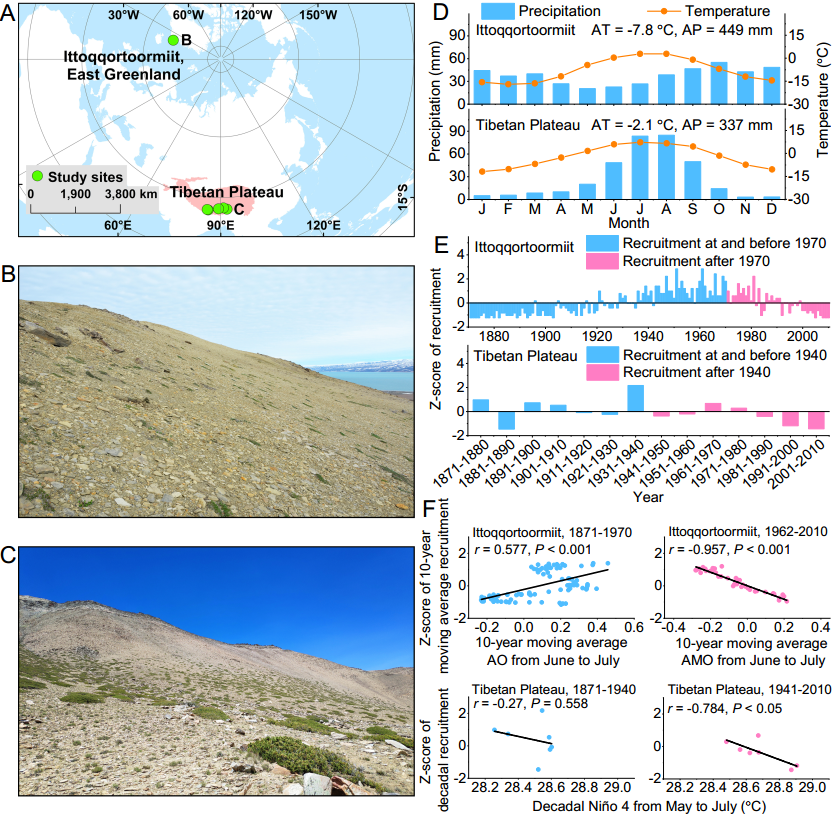
A new study led by Prof. LIANG Eryuan from the Institute of Tibetan Plateau Research (ITP) of the Chinese Academy of Sciences (CAS) shows that global warming has suppressed shrub recruitment in Greenland and the Tibetan Plateau.
This paper was published in PNAS on Feb. 21.
Shrub recruitment, a key component of vegetation dynamics beyond forests, is a highly sensitive indicator of climate and environmental change. It can act as an indicator of the tipping point of cold biomes.
The research team, from ITP/CAS, the University of Arizona, Instituto Pirenaico de Ecología (IPE-CSIC), and the University of Cambridge, used two long-term shrub recruitment datasets of 2,770 samples from the Tibetan Plateau and Greenland dating back to 1871 to identify trends in shrub recruitment.
Prof. LIANG said the study “adds strong evidence that climate-induced tipping points during the past decades have already reversed the formerly increasing trend in shrub recruitment across these cold biomes.”
The study shows that the shrub recruitment time series well captured the tipping points in some Arctic and Tibetan shrub communities. For example, in Greenland and the Tibetan Plateau, shrub recruitment reached tipping points around 1961–1970 and 1930–1940, respectively. Since then, shrub recruitment has been steadily declining.
This decline is likely related to warmer and drier climates across the Tibetan Plateau and Greenland in association with a stronger summer El Nino Southern Oscillation (ENSO) and Atlantic Multidecadal Oscillation (AMO), respectively.
This study also indicates that the optimal climate for shrub recruitment has already passed in two remote and ecologically important cold regions, thus offering an early warning signal of a phase shift in shrub communities.
However, to further understand the effects of warming on shrub-dominated cold biomes, more datasets will be needed to show changes in shrub recruitment over a longer time scale.
The research was supported by the National Natural Science Foundation of China, the Youth Innovation Promotion Association, the Chinese Academy of Sciences, and the Second Tibetan Plateau Scientific Expedition and Research Program.


